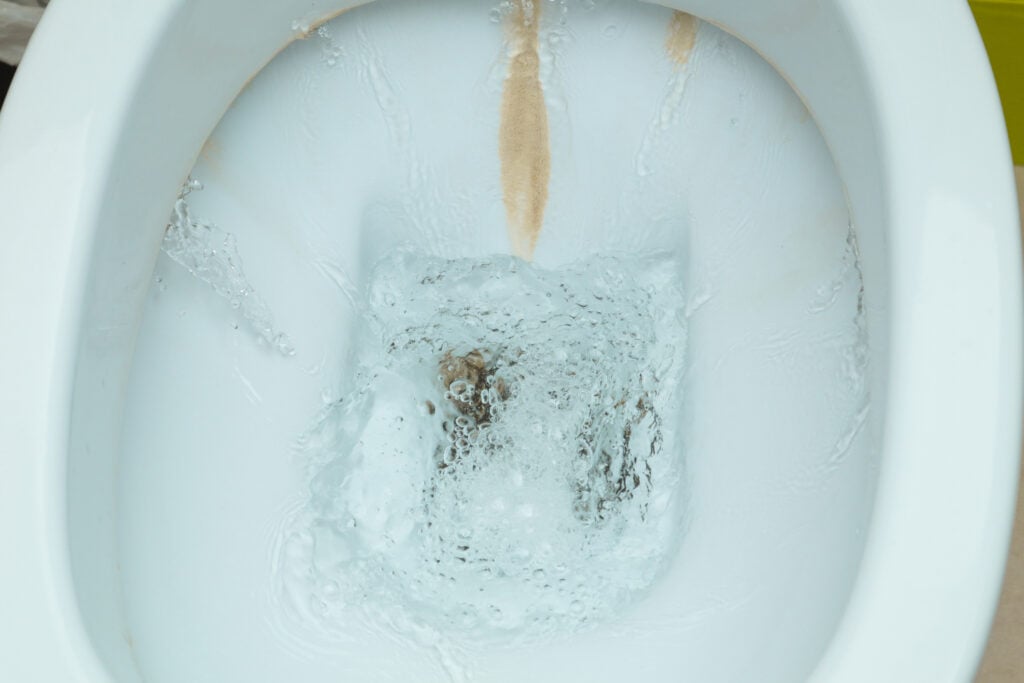Introduction to Calcium Deposits
As a homeowner, a sparkling clean and well-functioning toilet is essential for maintaining a hygienic and comfortable home. Unfortunately, calcium deposits can build up in your toilet over time, leading to unsightly stains and potential plumbing issues. In this guide, we will delve into the causes of calcium deposits, explore the negative effects they can have on your toilet, and provide a comprehensive step-by-step solution to remove these stubborn stains once and for all.
- Understanding Calcium Deposits:
Calcium deposits, also known as limescale, are a common issue that arises from the presence of hard water. Hard water contains a high concentration of minerals, namely calcium and magnesium. When hard water is repeatedly flushed through your toilet, these minerals can accumulate and form stubborn, off-white or yellowish deposits. - Signs and Effects of Calcium Deposits in Your Toilet:
Identifying calcium deposits in your toilet is crucial for prompt action. Look out for signs such as discolored stains on the bowl, reduced water flow during flushing, foul odors, or a constantly running toilet. Ignoring these signs can lead to more significant problems, including clogged pipes, reduced flushing efficiency, and increased water consumption. - Preparation: Gathering the Essential Tools and Materials:
Before tackling the calcium deposits, it’s essential to gather the necessary tools and materials. This includes rubber gloves, a toilet brush, a plastic putty knife or a pumice stone, white vinegar or citric acid, and a bucket for water disposal during the cleaning process. Safety goggles and a face mask are also recommended to protect yourself from any splashes or fumes.
Systematic process of removing those stubborn calcium deposits:
Step 1: Empty the Toilet Bowl:
Start by turning off the water supply to your toilet. Locate the shut-off valve near the base of the toilet and turn it clockwise to stop the water flow. Flush the toilet once to empty the bowl completely.
Step 2: Prepare a Cleaning Solution:
Choose between white vinegar or citric acid, both of which are effective and environmentally friendly solutions for removing calcium deposits. Dilute the chosen cleaner with water according to the manufacturer’s instructions. Alternatively, mix one part cleaner with one part warm water to make your solution.
Step 3: Apply the Cleaning Solution:
Carefully pour the cleaning solution into the toilet bowl, ensuring that the solution covers the entire affected area. Allow the cleaning solution to sit for at least 30 minutes, or longer for severe calcium buildup.
Step 4: Scrub the Toilet Bowl:
Put on your rubber gloves and grab a toilet brush or a plastic putty knife. Gently scrub the toilet bowl, targeting the areas with calcium deposits. Avoid using abrasive scrub brushes or metal tools, as they may damage the porcelain surface of the toilet.
Step 5: Flush and Repeat if Necessary:
After scrubbing, turn the water supply back on, and flush the toilet once, allowing fresh water to rinse away the cleaning solution and loosened deposits. If traces of calcium deposits remain, repeat the process until your toilet bowl is sparkling clean.
Preventing Future Calcium Deposits:
To avoid the recurrence of calcium deposits, consider a few preventive measures. Installing a water softener system or using water conditioner tablets can help minimize the mineral content in your water supply. Regularly cleaning your toilet and using mild cleaning agents can also prevent calcium buildup.
Conclusion:
By following this comprehensive step-by-step guide, homeowners can effectively and safely remove calcium deposits from their toilets, restoring their toilets to their former glory. Remember, regular maintenance and preventive measures can significantly reduce the likelihood of calcium deposits reoccurring, ensuring a clean and well-functioning toilet for years to come.
As always, if you encounter any challenges or if the calcium deposits persist despite your efforts, don’t hesitate to contact your trusted professional plumber at Wally Blanton Plumbing & Sewer for expert assistance.
Learn More About Home Plumbing Solutions at https://wbplumbingsewer.com/schedule/
Have an emergency? Call us now at (262) 228-9821.

